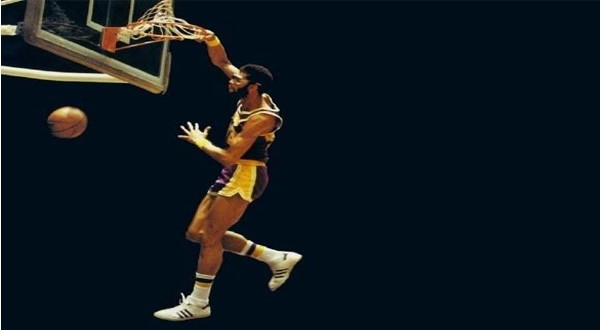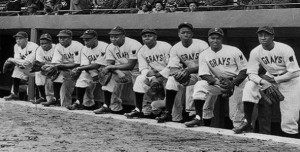Kareem Abdul-Jabbar is the NBA’s all-time leading scorer and a New York Times best-selling author who has written seven books, including Black Profiles in Courage; A Season on the Reservation; Brothers in Arms: The Epic Story of the 761st Tank Battalion, WWII’s Forgotten Heroes; On the Shoulders of Giants: My Journey Through the Harlem Renaissance; and What Color is My World? The Lost History of African-American Inventors. He is also an avid collector. Here is his story.
The other day, Deborah, my business manager, came with me to my storage unit to look over the extensive collection of basketball memorabilia I’ve amassed over my career. She surveyed the mountainous topography of precariously balanced stacks, newspaper-wrapped piles and blanket-shrouded lumps. She shook her head and said, “So, when did you decide to audition for Hoarders?”
“I’m not a hoarder,” I protested. “I’m a collector.”
She shrugged. “Tomato, tomahto.”
That got me to thinking. What is the difference between serious collectors and compulsive hoarders (also called “pathological collectors”)? Many people would assume the difference is money. It’s like that old saying that poor people acting weird are crazy, but rich people acting the same way are merely eccentric. But there are a lot of well-off people that are self-confessed hoarders: Lindsay Lohan and Lisa Kudrow for example. And billionaire Howard Hughes was rumored to collect his own fingernail clippings.
So, the distinction between serious collector and pathological collector has to be something more than how much money you spend. I think the difference comes down to three things: sentiment, value and sharing.
Sentiment is about what you choose to collect and why. While hoarders often collect random things like newspapers, deer antlers and National Geographics, collectors usually choose items that have some emotional meaning. There’s an episode of X-Files in which Peter Boyle, guest-starring as a psychic, ponders this question: “Why did this woman collect dolls? What was it about her life? Was it one specific moment where she suddenly said, ‘I know, dolls!’ or was it a whole series of things, starting when her parents first met, that somehow combined in such a way that in the end she had no choice but to be a doll collector.”
Great collecting starts with great passion. Kids all over the world will spend their last cent on trading cards. So did I. When I was in grade school, I tried to get all the cards of my favorite team, the Brooklyn Dodgers. I also collected the cards of some of my favorite players like Ernie Banks or Hank Aaron. That passion was motivated by love of baseball and my addiction to bubblegum. Man, how I wish I still had all those mint-condition cards now. That makes me part of the largest club in the United States: old guys that wish they still had their childhood collections of comic books, trading cards, Rock ‘Em Sock ‘Em Robots, or whatever made their eyes go wide with anticipation when they were kids.
EVOLVING PASSIONS
Later in life, I started collecting memorabilia from the Old West, especially guns. Why? The romance of the era as portrayed in some of my favorite TV shows: The Rifleman, Maverick, Bat Masterson, and The Rebel. The Old West embodies the American spirit of enterprise, courage and individuality. A lone man or woman with nothing could, through sheer will power and guts, forge an empire, build a town, or bring law and order. The guns symbolize the courage and the risk involved whenever we choose the road less traveled.
As I grew up and learned more about the real history of the Old West, my gun collecting took on even more meaning. I read about Wild Bill Hickok’s connection to the Underground Railroad. I learned about Nat Love, Cherokee Bill, “Stagecoach” Mary Fields, the Buffalo Soldiers, and my personal favorite, Bass Reeves, a U.S. Marshal who was part gunman and part Sherlock Holmes. Now my collection reminds me of the black men and women that helped build this country with their heroics.
I collect other items as well as guns. Persian rugs, gold coins, art. And though some of my collection is worth much more now than when I started, I never collected anything with the idea that someday it would be valuable. Those people are investors more than collectors. A real collector may justify the expense to everyone else by claiming whatever they’re collecting will appreciate in value. But deep down inside, they know they’d do it anyway because they just have to have that thing.
My main collection includes all the basketball trophies and awards I’ve been given over the course of my career. It’s probably the largest collection of basketball memorabilia by an individual in the world. And every single item in that collection has meaning to me. Some of the pieces are inspiring, some are humbling, some make me smile, some make me tear up. All are infused with emotional power.
COLLECTORS ARE PROUD
Having said that, I realize that another distinction between hoarding and collection is the value of the items gathered. The hoarding we’re familiar with from TV shows rarely involves an organized effort to acquire specific pieces that when put together with similar pieces, creates a collection that is greater than the sum of its individual parts. The reason these items are worth so much money is because they usually reflect something great about the society and culture that they came from. Works of art, records, books, pottery, coins — they all tell us something about the time they came from and the people who created them.
The third distinction is sharing. While the hoarder generally likes to hide his collection in the recesses of his home, the true collector wishes to share the fruits of his efforts. The collector is like a proud parent who wants to tell others of his children’s accomplishments. The hoarder’s child lives in the basement, jobless, playing Angry Birds in his underwear all day. Admittedly, having all my basketball mementoes shoved haphazardly into a storage unit was a bit more hoarder than collector. However, since then I’ve arranged to have all the items professionally displayed in a traveling show that will be appearing at various sporting events around the country.
Sentiment. Value. Sharing. That’s what makes collectors part historian, part sociologist, and part museum curator. We wear many hats. Hmmm. Hats. Now thatwould make a great collection.
©2012 Kareem Abdul-Jabbar as told to Heritage Magazine
For more information, visit www.KareemAbdulJabbar.com.





